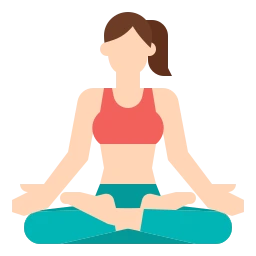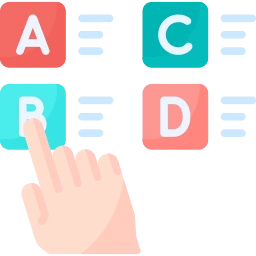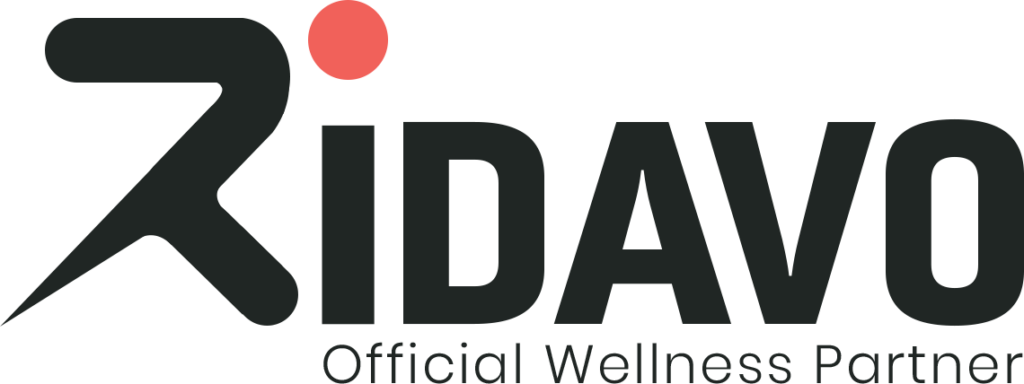
Why Join?

How It Works

Getting Started

FAQ

Live Classes

Video-On-Demand

News & Blogs

Communities

My Stats

My Diet Plans

My Offers

My Reward

Success Stories

Mental Health

Refer & Earn

Quizes

Why Join?
Join and Elevate your wellness journey with Ridavo!

How It Works
Transform your fitness journey with Ridavo: Here's How!

Getting Started
Start small, start now. Journey to better health has never been easier with Ridavo.

FAQ
Got questions? We’ve got answers! Explore our FAQs for all the information you need.

Live Classes
Real trainers, real results. Join our live classes and experience the difference.

Video-On-Demand
No excuses! Access our video on demand anytime, anywhere.

News & Blogs
Stay up-to-date! Find inspiration, tips, and more in our expertly curated news and blogs.

Communities
Experience the power to celebrate, learn, grow and support collectively as a commune.

My Stats
Get a comprehensive view to track your progress and stay on top of your fitness game.

My Diet Plans
Eat smarter, not harder! Say hello to results with our customised diet plans.

My Offers
Unlock the best deals and discounts with our exclusive offers section!

My Reward
Celebrate your success! Keep the motivation high and the rewards even higher.

Success Stories
Real people, real stories, real transformations. Get inspired to let Ridavo help you make it happen.

Mental Health
Your mental health matters. Let Ridavo help you care for it.

Refer & Earn
Spread the word, earn the perks! Love Ridavo? Share it with your friends and family.

Quizes
Ready for a mental workout? Test your knowledge and challenge yourself with our interactive quizzes.
Yoga Styles
1. Our platform offers a variety of yoga styles, including Hatha, Vinyasa, Ashtanga, Kundalini, and more.
2. Each style has its unique benefits and offers different levels of challenge.
3. Our teachers are experienced in teaching multiple styles, and we aim to cater to students of all levels and preferences.
1. Hatha yoga is a gentle style that focuses on breathing and holding postures to improve flexibility and relaxation.
2. Vinyasa yoga is a more dynamic style that involves flowing movements and synchronizing breath with movement to build strength and endurance.
3. Ashtanga yoga is a more physically demanding style that follows a set sequence of postures to develop strength, flexibility, and stamina.
4. Kundalini yoga is a more spiritual and meditative style that involves chanting, breathing exercises, and movement to awaken the energy at the base of the spine.
5. Each style has specific benefits for the mind and body, and our teachers can provide more information on each style.
1. Consider your fitness level, flexibility, and overall health when choosing a style of yoga.
2. If you’re a beginner, start with a gentle style like Hatha or beginner-level Vinyasa.
3. If you’re looking for a more challenging practice, try Ashtanga or a more advanced Vinyasa class.
4. If you’re interested in the spiritual aspect of yoga, Kundalini may be a good fit for you.
5. Talk to our teachers or consult with your healthcare provider if you have any concerns about which style is right for you.
1. In Hatha yoga, focus on breathing and holding postures to build strength and flexibility gradually.
2. In Vinyasa yoga, follow the teacher’s cues and focus on synchronizing your breath with each movement.
3. In Ashtanga yoga, learn the primary series first and focus on mastering each posture before moving on to the next.
4. In Kundalini yoga, be open to the spiritual and meditative aspects of the practice and be prepared to chant and use breathing exercises.
5. Above all, be patient and listen to your body. Don’t push yourself too hard and take breaks when needed. which style is right for you.
Yoga Positions
1. Start with a warm-up to prepare your body.
2. Follow the instructions of a qualified yoga teacher or use a reliable resource for guidance.
3. Begin with beginner-friendly poses and progress to more challenging poses as your practice advances.
1. Maintain proper alignment to avoid injury and achieve the intended benefits of the pose.
2. Use props to assist with alignment and modifications based on your level of experience.
3. Listen to your body and adjust the pose accordingly.
1. Each pose offers unique physical, mental, and emotional benefits.
2. For example, downward dog strengthens the arms and legs, while also calming the mind and reducing stress.
1. Begin with a warm-up and progress to standing poses, balancing poses, seated poses, and end with relaxation.
2. You can also incorporate other elements such as pranayama (breathing exercises) and meditation.
1. Rushing into a pose without proper preparation.
2. Overstretching or overexerting yourself.
3. Holding your breath or forgetting to breathe deeply during the pose.
Yoga Philosphy
1. Yoga philosophy is a system of beliefs and principles that guide the practice of yoga. It includes concepts such as self-awareness, mindfulness, and the pursuit of inner peace.
2. The philosophy of yoga can be traced back to ancient Indian texts, such as the Yoga Sutras of Patanjali, which outline the principles and practices of yoga.
The eight limbs of yoga, also known as Ashtanga Yoga, is a system of yoga outlined by Patanjali in the Yoga Sutras. The eight limbs are:
1. Yama – moral and ethical guidelines
2. Niyama – self-discipline and spiritual observances
3. Asana – physical postures
4. Pranayama – breathing techniques
5. Pratyahara – withdrawal of the senses
6. Dharana – concentration
7. Dhyana – meditation
8. Samadhi – state of pure consciousness
1. One can incorporate yoga philosophy into their practice and daily life by understanding and implementing the principles of yoga, such as mindfulness, self-awareness, compassion, and non-judgment.
2. Practicing yoga postures, breathing techniques, and meditation can help one connect with their body, mind, and spirit, and cultivate a sense of inner peace and harmony.
1. There are many books, online courses, and workshops available for those interested in studying yoga philosophy and deepening their understanding of the practice.
2. Some popular books on yoga philosophy include “The Yoga Sutras of Patanjali” by Sri Swami Satchidananda, “Light on Yoga” by B.K.S. Iyengar, and “The Heart of Yoga” by T.K.V. Desikachar.
Yoga Lifestyle
1. Focus on whole foods that are nutrient-dense and minimally processed.
2. Incorporate a variety of colorful fruits and vegetables into your diet.
3. Choose high-quality protein sources such as lean meats, beans, and nuts.
4. Avoid or limit processed foods, sugar, and saturated fats.
5. Practice mindful eating by listening to your body’s hunger and fullness cues.
1. Start with just a few minutes of meditation per day and gradually increase the time.
2. Experiment with different types of meditation, such as mindfulness, loving-kindness, or mantra meditation, to find what works best for you.
3. Create a dedicated space for your meditation practice, free from distractions.
4. Use guided meditations or apps to help guide your practice.
5. Remember that consistency is key – aim to meditate daily, even if it’s just for a few minutes.
1. Improved flexibility, strength, and balance.
2. Reduced stress and anxiety.
3. Improved cardiovascular health.
4. Increased mindfulness and self-awareness.
5. Enhanced immune function.
6. Improved sleep quality.
1. Find a space in your home that is quiet and free from distractions.
2. Gather props such as a yoga mat, blocks, and straps if needed.
3. Follow along with online videos or use a yoga app for guided practices.
4. Start with a few poses that you are comfortable with and gradually add more challenging poses as you progress.
5. Listen to your body and modify poses as needed to avoid injury.
1. Start your day with a few minutes of yoga or stretching to energize your body and mind.
2. Take breaks throughout the day to practice breathing exercises or mini yoga sessions.
3. Incorporate yoga into your workout routine by attending classes or practicing at home.
4. Wind down in the evening with a restorative yoga practice or gentle stretching.
5. Remember that even small amounts of yoga throughout the day can have a big impact on your overall well-being.
Yoga Techniques
1. Start on your hands and knees with your wrists under your shoulders and knees under your hips.
2. Press into your hands and lift your hips up and back, straightening your arms and legs as much as possible.
3. Keep your head and neck relaxed, and your gaze towards your feet.
4. Press your heels towards the ground, but keep a slight bend in your knees if needed.
1. Find a quiet and comfortable place to sit or lie down.
2. Focus on your breath, and try to let go of any thoughts or distractions.
3. You can also try guided meditations, which can be found online or through meditation apps.
4. Start with short sessions, such as 5-10 minutes, and gradually increase the length over time.
1. Start with a strong foundation by interlacing your fingers and creating a triangle with your forearms.
2. Place the crown of your head on the ground, and lift your hips up towards the sky.
3. Walk your feet towards your head, and when you feel stable, lift one leg up at a time.
4. Engage your core muscles to maintain balance, and avoid any sudden movements or jerks.
1. Focus on your breath and try to synchronize your movements with your inhales and exhales.
2. Experiment with different yoga styles and teachers to find what resonates with you.
3. Challenge yourself by trying new poses or practicing for longer periods of time.
4. Incorporate meditation or pranayama into your practice to cultivate mindfulness and inner awareness.
1. Props such as blocks, straps, and bolsters can help you modify or deepen certain poses.
2. Blocks can be used to bring the ground closer to you or support your body in certain positions.
3. Straps can help you extend your reach and maintain proper alignment.
4. Bolsters can be used for support in restorative poses or to deepen stretches.
1. Consistent and regular practice can help improve flexibility over time.
2. Incorporate stretching and gentle movements into your daily routine.
3. Try different types of yoga, such as yin or restorative, which focus on longer holds and deeper stretches.
4. Use props to help support your body and prevent overstretching.
1. Start with a warm-up and gentle stretches to prepare your body.
2. Move into standing or balance poses, then seated or supine poses.
3. End with a cool-down and relaxation period.
4. Consider themes or intentions for your sequence, such as heart-opening or grounding.
1. Focus on your breath and try to synchronize your movements with your inhales and exhales.
2. Start with basic techniques such as deep belly breathing or alternate nostril breathing.
3. Consider taking a pranayama-focused class or workshop to deepen your practice.
1. Consider the thickness, material, and texture of the mat.
2. Look for a mat that provides enough cushioning and support for your practice.
3. Read reviews and ask for recommendations from other yogis.
1. Focus on your breath and try to move with intention and control.
2. Avoid rushing or forcing your movements, and listen to your body’s signals.
3. Consider taking a vinyasa or flow-based class to practice smooth and fluid transitions.
1. Step-by-step instructions can be found in various resources such as yoga books, online videos, or through guided classes.
2. Practice regularly to develop a smooth and flowing sequence.
1. Find a comfortable seated position and focus on your breath.
2. Experiment with different breathing techniques such as Ujjayi or Nadi Shodhana.
3. Start with shorter sessions and gradually increase the duration of your pranayama practice.
1. Find a comfortable seated position and focus on your breath or a specific object.
2. Set a timer for a desired length of time and practice regularly.
3. Consider using guided meditation resources or attending meditation classes.
1. Start in a tabletop position, with hands and knees on the ground.
2. Lift the hips up and back, straightening the arms and legs, forming an inverted “V” shape with the body.
3. Ground down through the hands and feet, and lengthen the spine.
4. Adjust the alignment as needed, such as bending the knees or lifting the heels.
1. Learn headstand under the guidance of a qualified yoga teacher.
2. Start with preparatory poses such as Dolphin Pose or Supported Headstand to build strength and alignment.
3. Use a wall or props for support, and avoid this pose if you have any neck or shoulder injuries.
1. Work with a qualified yoga teacher or therapist to modify poses and avoid aggravating injuries.
2. Use props such as blocks, straps, or blankets to support the body and maintain alignment.
3. Listen to your body and avoid pushing beyond your limits.
1. Explore different ways to use props to support the body and deepen your practice.
2. Learn proper alignment and use props as needed to maintain it.
3. Use high-quality and durable props that are appropriate for your needs.
1. Set a specific time and space for your home practice.
2. Choose poses and sequences that are appropriate for your level and needs.
3. Use online resources, books, or guided classes to inspire and guide your practice.
1. Focus on the present moment and bring awareness to the breath and body during practice.
2. Practice seated meditation or mindfulness techniques outside of yoga practice.
3. Use yoga as a tool to cultivate mindfulness and inner awareness.
1. Research different styles and try various classes to find the style that resonates with you.
2. Consider your goals and needs, such as stress relief or physical fitness.
3. Seek guidance from a qualified yoga teacher or therapist to find the appropriate style for your needs.
Yoga Levels
1. Visit https://www.ridavo.com/register/
2. Click on the ‘Sign Up’ or ‘Join’ button
3. Enter your details and create a username and password
4. Click on the ‘Submit’ button
5. You will receive a confirmation email, follow the instructions to activate your account
1. Visit the ‘Membership Packages’ section on our website
2. Select the package that suits your needs
3. Enter your payment details and click on the ‘Subscribe’ button
4. Your membership will be activated instantly and you can start attending live classes and accessing video-on-demand content
1. Once you have subscribed to a membership package, you can log in to your account on our website
2. Visit the ‘Classes’ or ‘Video-On-Demand’ section
3. Select the class or video you wish to attend or watch
4. Click on the ‘Join’ or ‘Play’ button to access the content
1. Log in to your account on our website
2. Visit the ‘Account Settings’ section
3. Edit the information you wish to update, such as name, email, or password
4. Click on the ‘Save’ or ‘Update’ button to save the changes
Get Started
1. Visit https://www.ridavo.com/register/
2. Click on the ‘Sign Up’ or ‘Join’ button
3. Enter your details and create a username and password
4. Click on the ‘Submit’ button
5. You will receive a confirmation email, follow the instructions to activate your account
1. Visit the ‘Membership Packages’ section on our website
2. Select the package that suits your needs
3. Enter your payment details and click on the ‘Subscribe’ button
4. Your membership will be activated instantly and you can start attending live classes and accessing video-on-demand content
1. Once you have subscribed to a membership package, you can log in to your account on our website
2. Visit the ‘Classes’ or ‘Video-On-Demand’ section
3. Select the class or video you wish to attend or watch
4. Click on the ‘Join’ or ‘Play’ button to access the content
1. Log in to your account on our website
2. Visit the ‘Account Settings’ section
3. Edit the information you wish to update, such as name, email, or password
4. Click on the ‘Save’ or ‘Update’ button to save the changes
Live Classes
1. Login to your account on the dashboard
2. Navigate to the ‘Live Classes’ section
3. View the schedule of upcoming live classes
1. Login to your account
2. Navigate to the ‘Live Classes’ section
3. Find the live class you want to join and click ‘Join Now’
4. Follow the instructions to connect to the live class
1. Check if the live class has been recorded and is available as video-on-demand content
2. If not, contact the yoga platform to inquire about a possible recording or make-up session
1. Login to your account on the yoga platform
2. Navigate to the ‘Live Classes’ section
3. Find the live class reservation you want to cancel and click ‘Cancel Reservation’
1. Try refreshing your browser or closing and reopening the yoga platform website/app
2. Check your internet connection and try again
3. If the issue persists, contact the yoga platform support team for assistance
Video-On-Demand
1. Go to the Video-On-Demand section of the website
2. Browse the available videos by category or search for specific videos using the search bar
1. Click on the video you want to watch
2. Click on the play/pause button in the center of the video player to start or stop the video
Use the timeline at the bottom of the video player to navigate to different parts of the video
1. Click on the gear icon in the bottom right corner of the video player
2. Select the desired video quality from the options available
Mental Health
Mental health is a vital aspect of overall well-being, but it is often overlooked or neglected. At Ridavo, we believe that taking care of your mental health is just as important as taking care of your physical health. In this article, we will explore the importance of mental health and provide some tips for maintaining good mental health.
Mental health refers to our emotional, psychological, and social well-being. It affects how we think, feel, and act, and it plays a critical role in our ability to handle stress, relate to others, and make healthy choices. Mental health is not just the absence of a mental illness; it is a state of well-being in which we can realize our full potential, cope with the daily stresses of life, work productively, and contribute to our communities.
Mental health is important for several reasons. First, it affects our physical health. People with poor mental health are more likely to experience physical health problems such as heart disease, stroke, and diabetes. Second, mental health affects our relationships. Good mental health enables us to form strong, meaningful relationships with others, while poor mental health can lead to social isolation and loneliness. Third, mental health affects our productivity. People with good mental health are more likely to perform well at work or school, while those with poor mental health may struggle to concentrate, make decisions, or complete tasks. Finally, mental health is important because it affects our overall quality of life. When we are mentally healthy, we are more likely to experience positive emotions, feel a sense of purpose, and enjoy life to the fullest.
1. Practice self-care: Self-care involves taking care of yourself physically, emotionally, and mentally. This can include activities such as exercise, meditation, reading, or spending time with loved ones. It is essential to take some time for yourself every day and prioritize your well-being.
2. Stay connected with others: Social support is essential for good mental health. It is important to stay connected with friends and family members and to seek out social opportunities. Joining a club or group can be an excellent way to meet new people and build a sense of community.
3. Seek professional help: If you are struggling with your mental health, it is important to seek professional help. Mental health professionals, such as therapists or counselors, can help you develop coping strategies, manage stress, and work through difficult emotions.
4. Practice mindfulness: Mindfulness is a practice that involves paying attention to the present moment without judgment. It can help you manage stress, reduce anxiety, and improve overall well-being. There are many mindfulness practices, including meditation, deep breathing, and yoga.
5. Develop healthy habits: Developing healthy habits, such as eating a balanced diet, getting enough sleep, and exercising regularly, can have a positive impact on your mental health. These habits can help you manage stress, boost your mood, and improve your overall health and well-being.
In conclusion, taking care of our mental health is just as important as taking care of our physical health. At Ridavo, we understand the importance of both and strive to provide comprehensive wellness solutions to our users. Our platform offers a wide range of resources, from live fitness classes to personalized nutrition plans and community forums, all designed to promote a healthy mind and body.
In addition, our premier gear and accessories provide you with everything you need to support your fitness journey. From high-quality yoga mats to resistance bands and foam rollers, we've got you covered.
Investing in your mental health is a lifelong journey, and we're honored to be a part of it. Join the Ridavo community today and take the first step towards a happier, healthier you.
How it works?
Welcome to Ridavo, the ultimate online platform that offers you the flexibility to practice multiple exercises from the comfort of your home. Here's how it works:
The first step is to sign up for an account on Ridavo’s website. This will require you to provide some basic personal information and create a login and password.
We offer different membership plans to suit your needs and preferences, including options for both on-demand and live classes. Select the plan that best suits your schedule and goals.
Once you have signed up, you can browse and select from a variety of live online yoga classes. You can filter classes by style, duration, teacher, and difficulty level to find the perfect fit for you.
Join live classes according to your preference. You can connect with the instructor in real-time and receive personalized feedback and support. Our experienced teachers are dedicated to helping you achieve your goals.
In addition to live classes, you can access on-demand yoga videos at any time. These videos are designed to cater to your specific needs and goals, whether you want to focus on strength, flexibility, relaxation, or meditation.
Ridavo’s platform creates a sense of community and connection by providing various interactive features. You can participate in live chats, share your progress with other members, and even join group challenges to stay motivated.
Our platform uses algorithms to understand your preferences, practice history, and goals. This data is used to provide you with personalized recommendations for classes and instructors that are tailored to your needs.
The platform provides you with the flexibility to schedule and reschedule your classes according to your busy lifestyle. You can choose the time that suits you best and join the classes from anywhere with an internet connection.
The platform encourages users to provide feedback and ratings for classes and instructors. This feedback helps other users in selecting the best classes and instructors that suit their needs.
Ridavo uses secure payment methods to ensure the safety of your financial information. You can subscribe to a plan or pay for individual packages according to your preference. We accept major credit cards, including Visa, Mastercard, American Express. In addition you can pay via any mobile wallet or UPI in India. You can also pay via PayPal.
Our platform provides an easy cancellation policy in case you need to cancel a class or subscription. You can cancel your subscription anytime without any additional charges or penalties.
Our platform provides excellent customer support through email, chat, or WhatsApp. You can reach out to customer support for any questions or concerns, and they will be happy to assist you.
Why Join?
Welcome to Ridavo, the ultimate online platform that offers you the flexibility to practice multiple exercises from the comfort of your home. Here's how it works:
Ridavo employs highly qualified and experienced yoga teachers who are dedicated to helping students achieve their goals. They are skilled in various styles of yoga and can adapt their teaching to suit each individual’s needs and abilities.
Ridavo offers a wide range of classes, including various yoga styles, meditation, and pranayama, ensuring there is something for everyone. This variety allows participants to explore different aspects of yoga and discover what works best for them.
We offer a variety of yoga styles including Hatha, Vinyasa, Power, Yin, and Restorative yoga, so you can choose a style that aligns with your preferences and goals.
Ridavo offers online classes, providing you with the convenience and flexibility to practice yoga wherever you are. The online classes also come with the added benefit of being able to access them at any time, making it easier to fit yoga into your busy schedule.
Joining Ridavo means becoming part of a supportive community of like-minded individuals who share a passion for yoga and wellness. This community can provide encouragement, motivation, and accountability to help participants stay on track with their goals.
Ridavo provides a space for constant learning and growth, both in terms of physical practice and personal development. The classes and workshops offer new challenges and opportunities for growth, while the community support provides encouragement and motivation to keep pushing yourself further.
With Ridavo, participants can choose the class that best fits their schedule and preferences. Whether they prefer to attend live classes or access recorded sessions on-demand, Ridavo provides the flexibility and convenience to fit yoga practice into any lifestyle.
We offer affordable membership plans that provide access to unlimited classes, on-demand videos, and exclusive member-only events. Ridavo offers competitive pricing that is accessible to a wide range of individuals, making it possible for everyone to experience the benefits of yoga and wellness.
We understand that everyone’s schedule is different, which is why we offer on-demand videos accessible 24/7. You can practice yoga at your convenience from anywhere in the world.
With small class sizes and personalized attention from instructors, Ridavo participants can receive individualized feedback and modifications to ensure proper alignment and safe practice.
In addition to classes, Ridavo provides access to additional resources such as workshops, retreats, and online content to help participants deepen their practice and connect with others in the community.
Ridavo takes a holistic approach to yoga, incorporating elements of meditation, mindfulness, and pranayama (breathing techniques) into their classes. This approach not only helps to improve physical health but also mental and emotional wellbeing, promoting overall health and balance.
Joining Ridavo and practicing yoga regularly can lead to numerous health and wellness benefits, including increased flexibility, strength, balance, reduced stress, improved sleep, and more.



